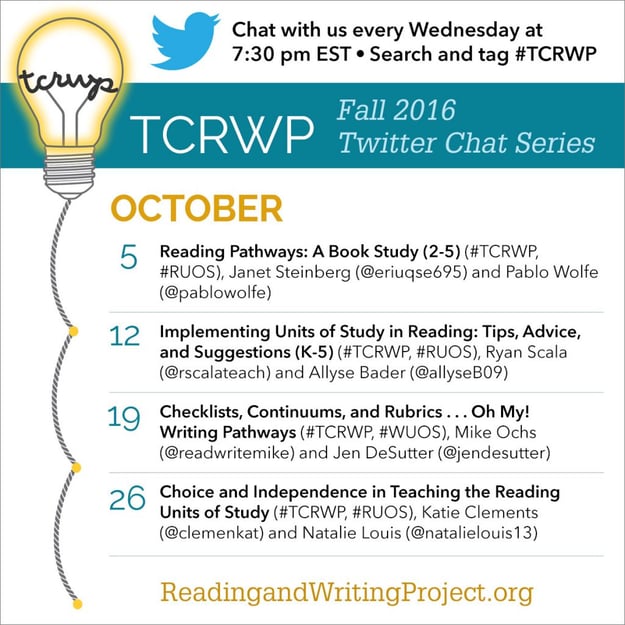
Written by Anna Gratz Cockerille
Assessment is a word that has come to take on a particular meaning in education. It has come to be synonymous with testing, evaluation, grading. But here is one traditional dictionary’s definition of assessment:
Assessment (n.): The evaluation or estimation of the nature, quality, or ability of someone or something.
This definition seems to carry less judgment and pressure than some of the ways in which the word assessment is often applied. To assess, then, is to really understand the current state of something. Assessment is about gathering information, noticing details, collecting ideas. It does not necessarily connote uncovering weakness, or ranking, or using data in a high-stakes way.
Much has been written about the differences between formative and summative assessment and the uses for both. The assessment system detailed in Writing Pathways, part of the Units of Study in Opinion, Information, and Narrative Writing by Lucy Calkins and colleagues, is a formative assessment system that does three important things:
1. Gives teachers an in-depth understanding of their students’ writing,
2. Supports teachers in creating plans based on their students’ work,
3. Gives students a deeper understanding of their own progression as writers.
In the first chapter of the book, Lucy writes, “The [assessment] system supports a growth mindset toward learning in general, and specifically toward learning to write, as students learn that they can lift the level of their writing in a step-by-step fashion by working hard, applying the skills and strategies that they’ve been taught, and being critical, evidence-based readers of their own writing.”
In this week’s TCRWP Twitter chat, Mike Ochs and Jen DeSutter will lead the community in taking a close look at the rich resource that is Writing Pathways. They will discuss the assessment system’s main tools, including:
- Continuums. The continuums are the heart of the assessment system. For each writing genre, opinion, information, and narrative there is a chart that describes a multi-grade progression of skill development in structure, development, and language conventions.
- Checklists. The checklists are grade-specific versions of the continuums, designed for students to use for self-assessing and setting goals.
- Rubrics. For each grade, there is a rubric for teachers to numerically score students’ writing. They are closely aligned to the continuums and the checklists.
One exciting development since the inception of these powerful tools is how educators have adapted and customized them to meet their students’ needs. The Writing Units of Study Facebook group abounds with examples of charts, lesson ideas, and additional tools based on tools in Writing Pathways. We’d like to share ideas like these and more on Twitter this week. Join us in the chat to give and get fresh ideas for how to get the absolute most out of this assessment system.
Each Wednesday night at 7:30pm eastern, The Teacher's College Reading and Writing Project hosts a Twitter chat using the hashtag #TCRWP. Join @readwritemike & @jendesutter to chat about Writing Pathways tomorrow evening.
Not on Twitter? Take Heinemann’s free Twitter for Educators course here.
 Anna Gratz Cockerille
Anna Gratz Cockerille
Coauthor of Bringing History to Life (Grade 4) in the Units of Study for Teaching Writing Series.
Anna was a teacher and a literacy coach in New York City and in Sydney, Australia, and later became a Staff Developer and Writer at TCRWP. She served as an adjunct instructor in the Literacy Specialist Program at Teachers College, and taught at several TCRWP institutes, including the content literacy institute, where she helped participants bring strong literacy instruction into social studies classrooms. Anna also has been a researcher for Lucy Calkins, contributing especially to Pathways to the Common Core: Accelerating Achievement (Heinemann 2012), and Navigating Nonfiction in the Units of Study for Teaching Reading, Grades 3–5 series (Heinemann 2010). Most recently, Anna served as an editor for the Units of Study for Teaching Reading, K–5 series.


